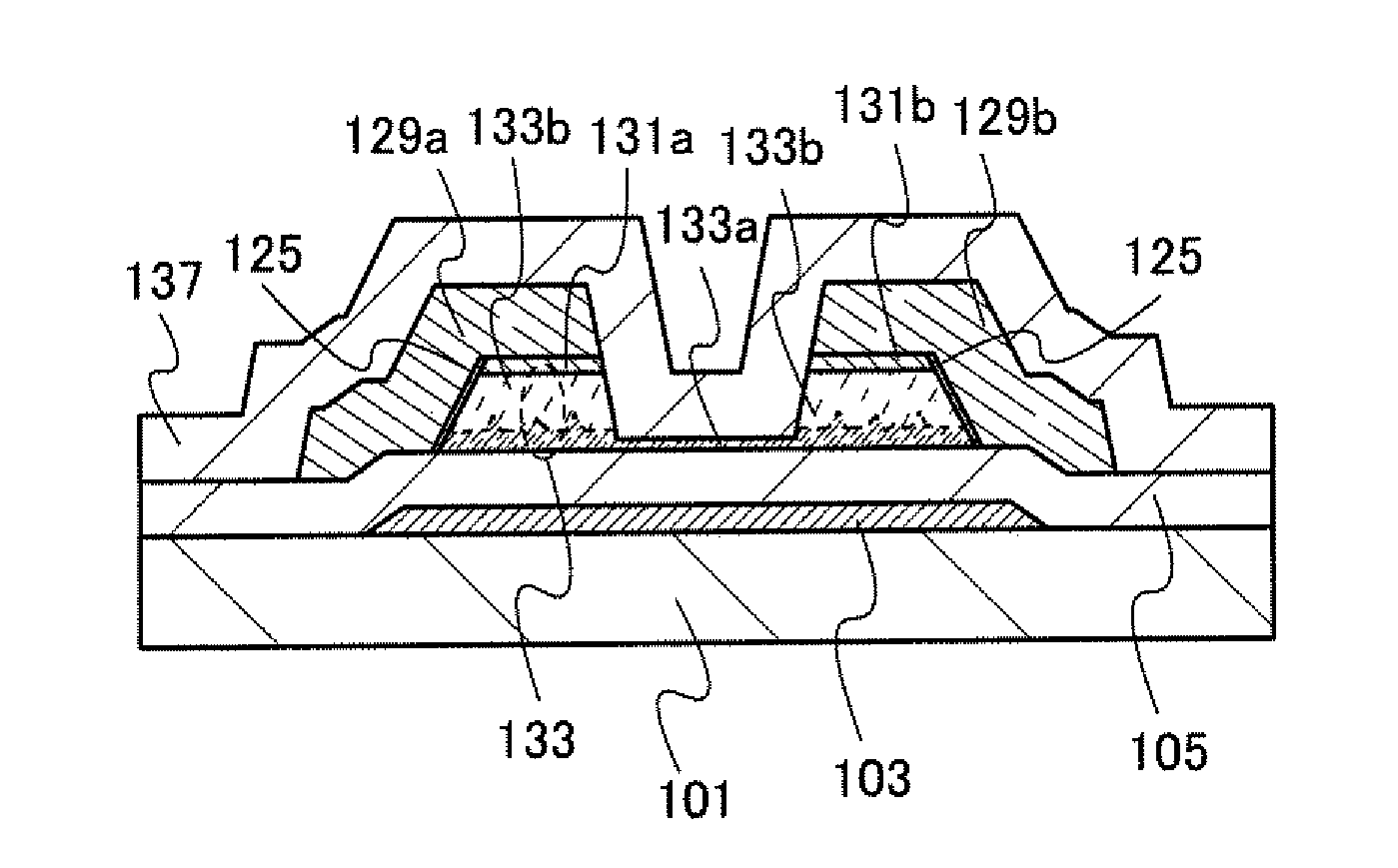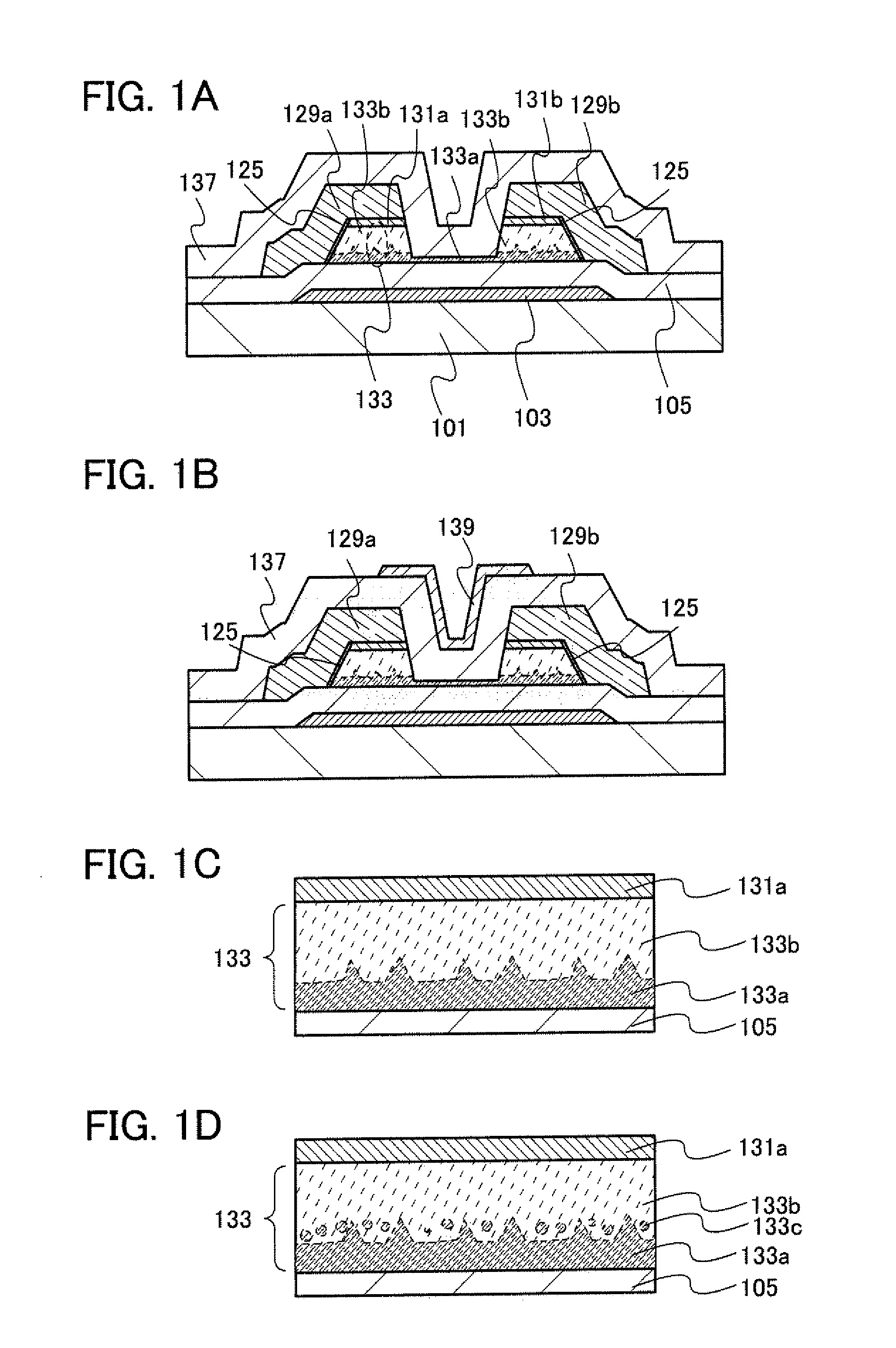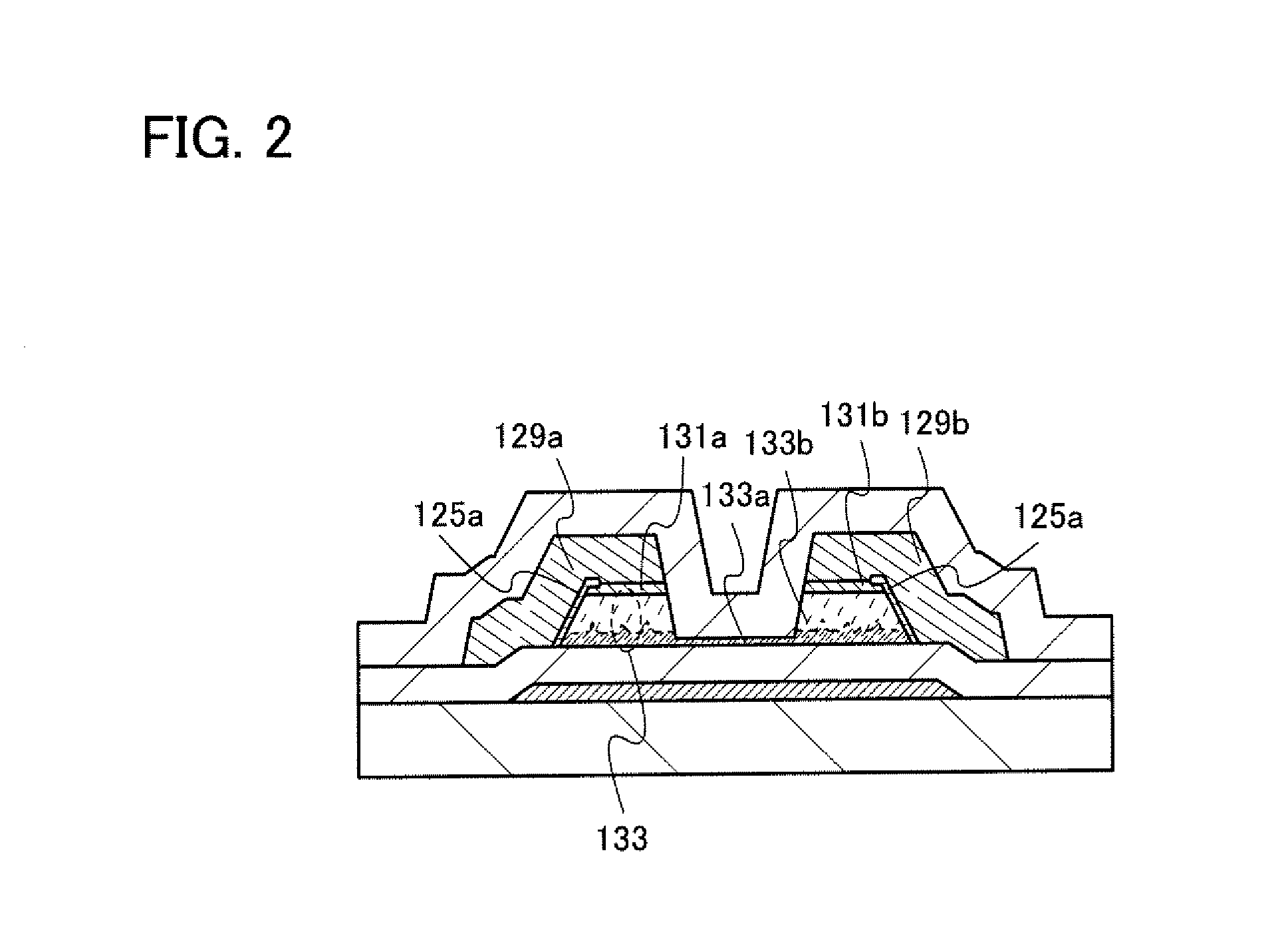Thin film transistor
a transistor and film technology, applied in the field of thin film transistors, can solve the problems of low field-effect mobility, etc., and achieve the effects of low current, high current, and high field-effect mobility
- Summary
- Abstract
- Description
- Claims
- Application Information
AI Technical Summary
Benefits of technology
Problems solved by technology
Method used
Image
Examples
embodiment 1
[0050]In this embodiment, a thin film transistor according to an embodiment of the present invention will be described with reference to FIGS. 1A to 1D. Note that an n-channel thin film transistor has higher carrier mobility than a p-channel thin film transistor. Further, it is preferable that all thin film transistors formed over one substrate have the same polarity because the number of manufacturing steps can be reduced. Thus, in this embodiment, an n-channel thin film transistor will be described.
[0051]FIGS. 1A to 1D are cross-sectional views illustrating a thin film transistor described in this embodiment.
[0052]A thin film transistor illustrated in FIG. 1A includes, over a substrate 101, a gate electrode 103, a semiconductor layer 133, a gate insulating layer 105 provided between the gate electrode 103 and the semiconductor layer 133, impurity semiconductor layers 131a and 131b which are in contact with the semiconductor layer 133 and function as a source region and a drain reg...
embodiment 2
[0093]In this embodiment, a thin film transistor having a structure different from that of Embodiment 1 will be described with reference to FIGS. 4A to 4C. A difference between this embodiment and Embodiment 1 is in the barrier region.
[0094]A thin film transistor illustrated in FIG. 4A includes, over the substrate 101, the gate electrode 103, the semiconductor layer 133 including the microcrystalline semiconductor region 133a and the pair of amorphous semiconductor regions 133b, the gate insulating layer 105 provided between the gate electrode 103 and the semiconductor layer 133, the impurity semiconductor layers 131a and 131b which are in contact with the semiconductor layer 133 and function as a source region and a drain region, and the wirings 129a and 129b which are in contact with the impurity semiconductor layers 131a and 131b. In addition, a first amorphous region 126a and a second amorphous region 126b are provided on the side wall of the semiconductor layer 133. Specificall...
embodiment 3
[0105]In this embodiment, a thin film transistor having a structure different from those of Embodiment 1 and Embodiment 2 will be described with reference to FIGS. 6A and 6B. A difference between this embodiment and Embodiment 1 is in the structure of the semiconductor layer.
[0106]A thin film transistor illustrated in FIG. 6A includes, over the substrate 101, the gate electrode 103, a semiconductor layer 143, the gate insulating layer 105 provided between the gate electrode 103 and the semiconductor layer 143, the impurity semiconductor layers 131a and 131b which are in contact with the semiconductor layer 143 and function as a source region and a drain region, and the wirings129a and 129b which are in contact with the impurity semiconductor layers 131a and 131b. In addition, the insulating region 125 functioning as a barrier region is provided on the side wall of the semiconductor layer 143, that is, between the semiconductor layer 143 and the wirings 129a and 129b. Moreover, the i...
PUM
 Login to View More
Login to View More Abstract
Description
Claims
Application Information
 Login to View More
Login to View More - R&D
- Intellectual Property
- Life Sciences
- Materials
- Tech Scout
- Unparalleled Data Quality
- Higher Quality Content
- 60% Fewer Hallucinations
Browse by: Latest US Patents, China's latest patents, Technical Efficacy Thesaurus, Application Domain, Technology Topic, Popular Technical Reports.
© 2025 PatSnap. All rights reserved.Legal|Privacy policy|Modern Slavery Act Transparency Statement|Sitemap|About US| Contact US: help@patsnap.com



